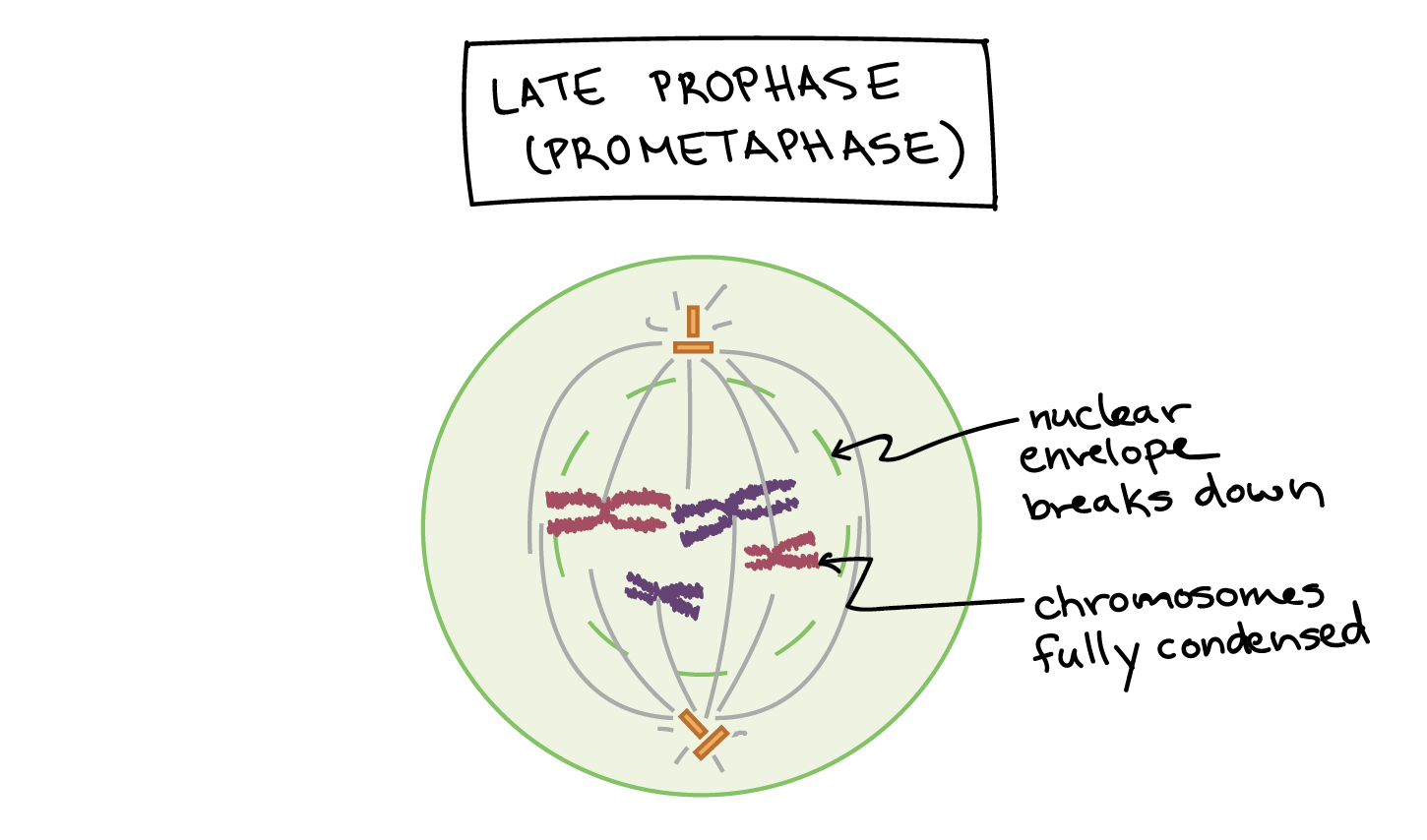

In higher eukaryotes the end of prophase corresponds to the breakdown of the nuclear envelope. Chromatin is stained blue, keratin is stained red, and microtubules are stained green. There they serve as the two poles of the mitotic spindle, which begins to form during late prophase.įluorescence micrographs of chromatin, keratin, and microtubules during mitosis of newt lung cells. The centrosomes (which had duplicated during interphase) separate and move to opposite sides of the nucleus.

In addition to chromosome condensation, cytoplasmic changes leading to the development of the mitotic spindle initiate during prophase. The condensed sister chromatids are then held together at the centromere, which (as discussed in Chapter 4) is a DNA sequence to which proteins bind to form the kinetochore-the site of eventual attachment of the spindle microtubules. These newly replicated DNA molecules remain intertwined throughout S and G 2, becoming untangled during the process of chromatin condensation. The beginning of prophase is marked by the appearance of condensed chromosomes, each of which consists of two sister chromatids (the daughter DNA molecules produced in S phase). Mitosis is conventionally divided into four stages- prophase, metaphase, anaphase, and telophase-which are illustrated for an animal cell in Figures 14.23 and 14.24. Sister chromatids then separate from each other and move to opposite poles of the spindle, followed by the formation of daughter nuclei. These basic events of mitosis include chromosome condensation, formation of the mitotic spindle, and attachment of chromosomes to the spindle microtubules. Microtubules from one centrosome attach to the kinetochore (protein structures at the centromeres) of one chromosome from each of the homologous pairs, while the other centrosome connects to the kinetochore of the other chromosome in each homologous pair, and each homologous pair moves towards the metaphase plate (where they line up before anaphase).Although many of the details of mitosis vary among different organisms, the fundamental processes that ensure the faithful segregation of sister chromatids are conserved in all eukaryotes. Centrosomes move to opposite ends of the cell, and the nuclear envelope dissolves.ħ. This formation occurs because of sister chromatid cohesion, where a gene that has been given to the homologous pair in synapsis is still bonded to the corresponding part on the sister chromatid of its former chromatid.Ħ. Some of these homologs have one or more chiasmata, an X shaped region where a genetic rearrangement has occurred. Synapsis ends, and the homologs move slightly apart, no longer bonded along their lengths like in the synaptonemal complex.ĥ. This forms a synaptonemal complex.ģ.The random rearrangement of corresponding genes occurs between the non sister chromatids (because at this stage each chromosome consists of two sister chromatids).Ĥ. The paired homologs become physically connected along their lengths through a process called synapsis. Chromosomes condense and homologs loosely pair along their lengths, aligned by gene.Ģ. The above is also how a 46 chromosome (double strand) cell in mitosis can result in 2 daughter cells each with 46 chromosomes (single strand).Įven Sal admits how confusing this is, but he explains all this visually in a separate video differentiating the terms chromatid, chromosome, and chromatin.ġ. So a haploid parent cell of 23 chromosomes (double strand) just created two haploid daughter cells of 23 chromosomes (now single strand). When the chromatids are separated they are now called chromosomes

Anaphase II splits the sister chromatids which now separate (23 chromatids go to one pole and 23 chromatids go to other pole). The parent cell starts with 23 chromosomes (EACH double stranded=two sister chromatids, so there are 46 chromatids. This means that in meoisis II when we split the sister chromatids: It is only when the sister chromatids separate are they each considered separate chromosomes. The single strand chromosome (1 chromosome) became two stranded yet attached identical sister chromatids (still 1 chromosome) Likewise chromosome 5 of dad is similar to chromosome 5 of mom)Īfter replication how many chromosomes do we have?
#Prophase metaphase code#
In interphase before S (replication phase) we have 46 single stranded chromosomes: 23 are from mom and 23 are from dad (they code for the same things meaning chromosome 1 of mom codes for the same thing as chromosome 1 of dad. Remember that when replicating in interphase, the chromosome number DOES NOT CHANGE


 0 kommentar(er)
0 kommentar(er)
